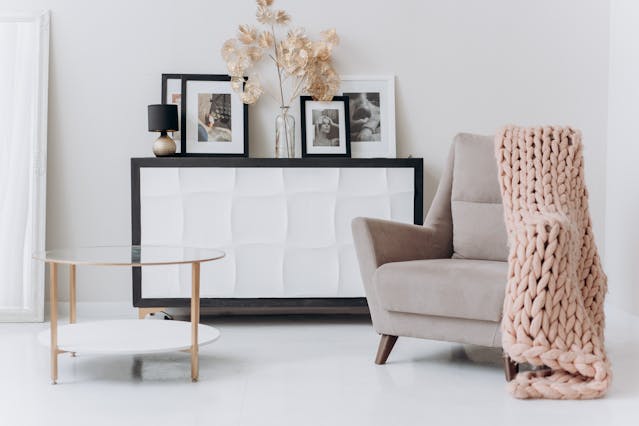Expert Insights
Elevate your home experience with our expert tips and insights.
Convenient Services
Make your move easier with our convenient rental services.
Outdoor Oasis
Create a beautiful outdoor space with our garden and pool equipment.
Inspiring Ideas
Find inspiration for your next home project with our collection of decor and real estate options.
ABOUT US
Our Mission
At Melgeecrafts, our mission is to provide our clients with the best resources, tips, and inspiration to create, maintain, and enhance their living spaces. We strive to make the process of finding the perfect pieces for your home as easy and stress-free as possible.
Transform Your Home with Our Wide Selection of Deco, Equipment, and Garden Items
Elevate the style and functionality of your living spaces with our extensive inventory of rental items in various categories, including deco, equipment, and garden.
Expert House Moving Services for a Stress-Free Relocation
Moving to a new home can be a daunting task, but with our team of professionals, you can relax and let us handle the heavy lifting.
Revamp Your Swimming Pool with Our Top-Notch Works and Services
Looking to upgrade your swimming pool? Our team of experts offers a wide range of works and services, including maintenance, repairs, and enhancements, to keep your pool in top condition all year round.
Discover Our Range of Services
Get assistance with relocating, renovating, and finding inspiration for your home.
Home Relocation Services
Let us handle the stress of moving your belongings to your new home.
Renovation Support
From design ideas to project management, we’ve got you covered.
Garden Inspiration
Transform your outdoor space into a tranquil oasis with our tips and resources.
Home Comforts
Browse our selection of furniture and decor rentals to enhance your living spaces.
Ready to take your home to the next level? Our expert team is here to help make your dream home a reality.
Our Impactful Numbers
Latest news
Dive into fun: create a splash-worthy pool haven in your uk home with safe and creative designs for kids’ play areas
Essential safety features for kid-friendly UK pool havens Creating a childproof[…]
Key strategies for crafting a powerful fire safety plan for multi-story homes in the uk
Overview of Fire Safety Regulations in the UK Fire safety regulations[…]
Illuminate your uk home: expert tips for harnessing natural light with mirrors
Understanding Natural Light in UK Homes Natural light plays a crucial[…]
Brighten your uk basement: creative ways to enhance natural light and transform your space
Maximising natural light in UK basements Bringing natural light into a[…]
The essential uk homeowner’s handbook: choosing the ideal rain barrel size for your suburban paradise
Selecting the Right Rain Barrel Size for Your Suburban UK Home[…]
Create a tranquil japanese zen oasis in your uk townhouse backyard: an in-depth step-by-step guide
Essential Principles of a Japanese Zen Oasis in a Townhouse Garden[…]
Decoding york’s flood legacy: essential insights for homebuyers on property price implications
Overview of York’s Flood History The city of York has a[…]
Create a vibrant tropical plant haven in your uk home for lively living
Essential Steps to Create a Tropical Plant Haven in Your UK[…]
Discover the best pool liners designed for uk weather: your comprehensive durability handbook
The Impact of UK Weather on Pool Liner Durability The UK[…]
Ultimate guide to achieving perfect indoor humidity: how uk residents can master dehumidifier use for optimal comfort
Achieving Ideal Indoor Humidity Levels in UK Homes Indoor humidity UK[…]
Create a tranquil pool sanctuary in your uk garden: a comprehensive guide to crafting your personal zen oasis
Planning Your Tranquil Pool Sanctuary Creating a serene garden pool starts[…]
Revamping welsh barns into idyllic residences: the ultimate handbook for rural renovation expertise
Essential Planning for Welsh Barn Renovation Projects Planning a Welsh barn[…]
Creating a haven for wildlife in the uk: a comprehensive guide to crafting thriving habitat pathways
Essential principles for crafting UK wildlife habitat pathways Designing effective habitat[…]
Revamp your outdoor oasis: the ultimate uk homeowner’s handbook for crafting a wildlife-friendly pond
Essential Planning for a Wildlife-Friendly UK Pond Creating a wildlife-friendly pond[…]
How aging electrical wiring impacts liverpool home insurance rates: essential insights for homeowners
Understanding the Impact of Aging Electrical Wiring Aging electrical wiring presents[…]
Ultimate child safety: best stair gates for your two-story birmingham home
Choosing the Best Stair Gates for Two-Story Homes in Birmingham When[…]
Become a certified uk organic livestock farmer by 2023: the ultimate step-by-step guide
Overview of Organic Livestock Farming in the UK Organic livestock farming[…]
Effortless relocation: expert tips for settling into your new uk neighborhood
Immediate steps to take after moving into your UK neighborhood Start[…]
Transform your uk loft: smart strategies for a cost-effective cooling system design
Practical strategies for cooling a UK loft cost-effectively Selecting cost-effective loft[…]
Discover effective ways to insulate your leeds victorian terrace: boost comfort and slash energy costs!
Key Insulation Strategies for Leeds Victorian Terraces Insulating Victorian terraces in[…]
Essential strategies for mobile hair salons in 2023: mastering uk regulations
Meeting 2023 UK Legal Requirements for Mobile Hair Salons Navigating UK[…]



